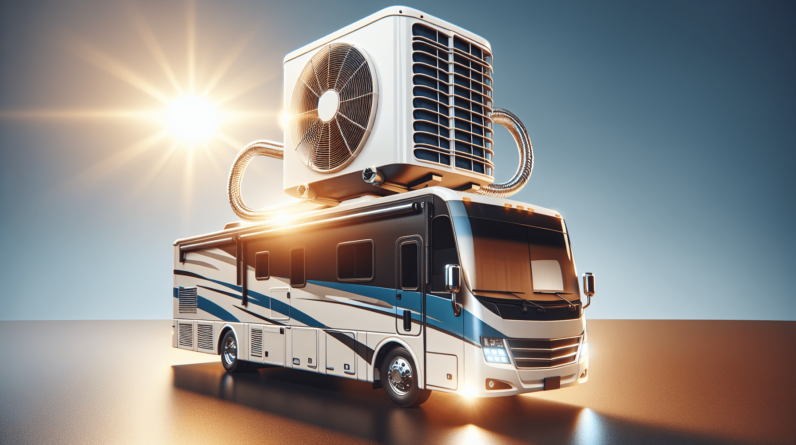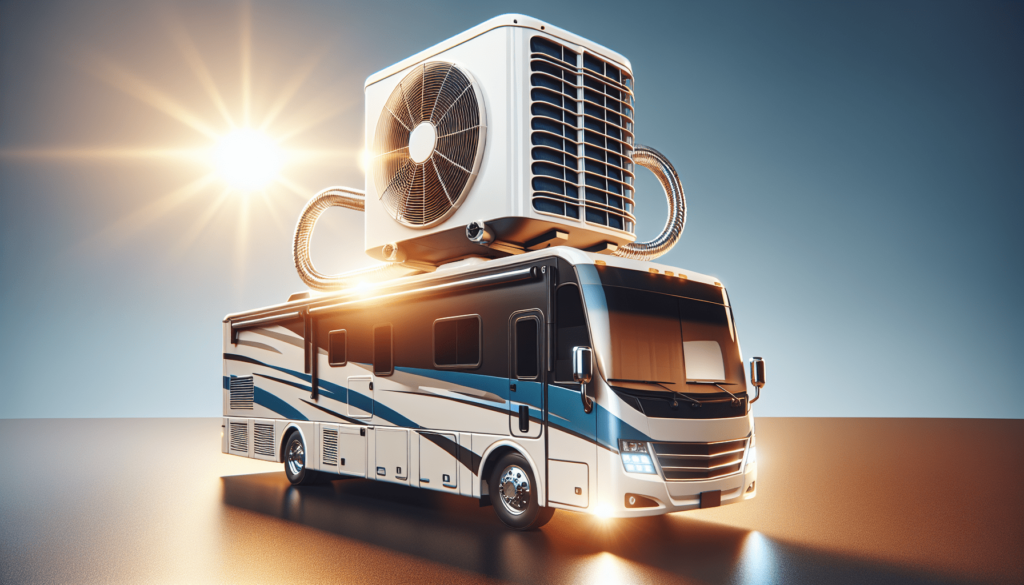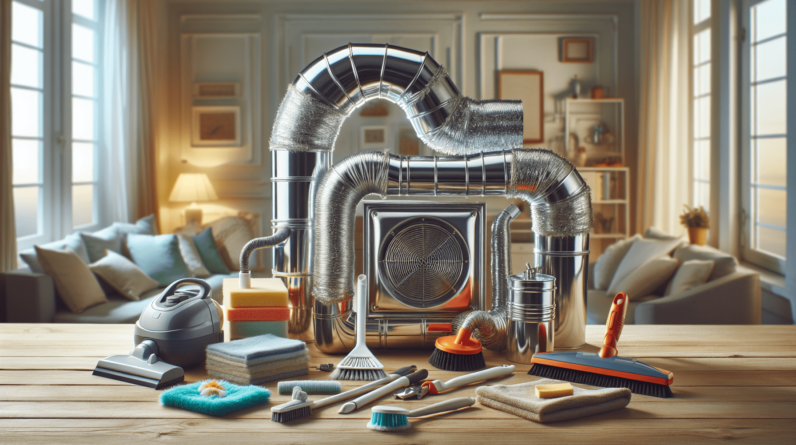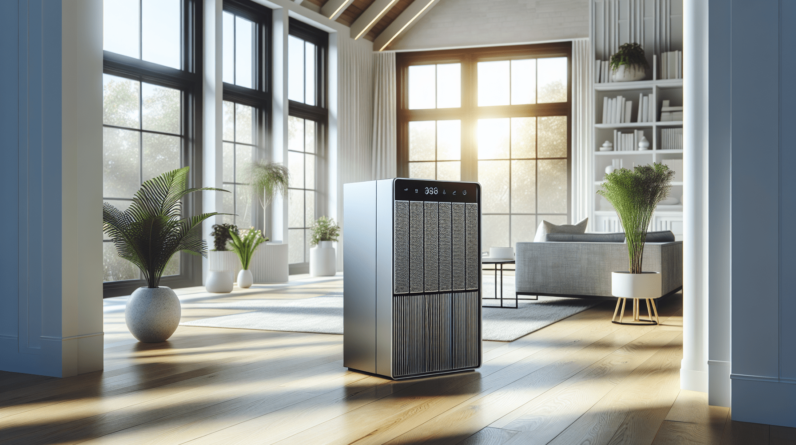

Have you ever felt the sweltering heat of summer while on a road trip, wishing for a refreshing breeze inside your RV? The air conditioner system plays an essential role in making your adventures comfortable and enjoyable. Understanding how this system works will empower you to make the most of your travels.

Understanding the RV Air Conditioner System
The RV air conditioner system is vital for maintaining a comfortable interior temperature while you’re on the road or parked at a campsite. It eliminates the discomfort that summer heat can bring, ensuring that you can relax, sleep, or enjoy time with family and friends.
How an RV Air Conditioner Works
An RV air conditioner operates on established refrigeration principles. Essentially, it removes heat from the interior of your RV and expels it outside. Here’s a simplified breakdown of the process:
- Evaporator Coil: Inside the RV, warm air is drawn over the evaporator coil. The refrigerant inside the coil absorbs this heat, transforming from a liquid to a gas.
- Compressor: This gas is then sent to the compressor, where its pressure is increased, raising its temperature.
- Condenser Coil: Next, the high-pressure gas moves to the condenser coil located outside your RV. Here, it releases heat to the outside air and converts back into a liquid.
- Expansion Valve: The refrigerant passes through the expansion valve, which lowers the pressure and temperature of the refrigerant, sending it back to the evaporator coil to repeat the cycle.
Understanding this basic cycle gives you insight into how important maintenance is—it ensures that all parts of this system function correctly for optimal performance.
Components of an RV Air Conditioner
Your RV air conditioner consists of various components, each with a specific role in ensuring effective cooling. Below are the key parts:
| Component | Description |
|---|---|
| Compressor | Pressurizes and circulates refrigerant through the unit. |
| Condenser Coil | Transforms refrigerant from gas back to liquid, releasing heat. |
| Evaporator Coil | Absorbs heat from the RV interior, cooling the air. |
| Expansion Valve | Regulates the flow of refrigerant into the evaporator. |
| Fans | Circulate air through the evaporator and condenser. |
| Thermostat | Controls the temperature setting for the air conditioner. |
Understanding each component’s role helps you diagnose issues and understand maintenance requirements better.
Types of RV Air Conditioners
There are several types of air conditioners available for RVs, each with their unique features and advantages. Choosing the right one depends on your specific needs and preferences.
Rooftop Air Conditioners
Rooftop air conditioners are the most common type installed in RVs. They are situated on the roof to save interior space and provide efficient cooling. Here are some features:
- Space-Saving Design: Since they are installed on the roof, they do not take up valuable interior space.
- Powerful Cooling: These units are robust and can cool larger areas effectively.
- Noise Levels: While rooftop units can be noisy, many modern models include sound-dampening designs to minimize disruption.
Portable Air Conditioners
If you prefer to have flexibility in cooling, a portable air conditioner might be the best choice. They can be moved around your RV as needed.
- Versatile Placement: You can position them wherever you need cooling most.
- Ease of Installation: Most portable units are easy to set up and require minimal installation.
- Limited Capacity: These units may not cool as efficiently as rooftop models in larger RVs.
Mini-Split Air Conditioners
Mini-split systems are becoming increasingly popular in modern RVs. They feature an outdoor condenser and an indoor air handling unit that provides a quieter operation.
- Energy Efficient: These systems generally consume less power, making them great for boondocking.
- Quiet Operation: With the noisy components located outside, you can enjoy a relatively quiet interior.
- Customizable Cooling: You can control the temperature in different zones of the RV, enhancing comfort.
Central Air Conditioning
If you’re fortunate enough to have a larger RV, central air conditioning might be available. This system functions similarly to a home unit, distributing cool air throughout the vehicle.
- Even Cooling: It delivers consistent cooling to all areas of the RV.
- Comfort: This system tends to maintain a more stable and comfortable temperature.
Understanding the differences among these types helps you choose the best one for your needs and lifestyle.
Benefits of an Efficient RV Air Conditioner System
Having an efficient air conditioner system in your RV brings numerous benefits. Let’s explore a few of them.
Enhanced Comfort
The primary role of an air conditioner is to keep you comfortable inside your RV. Whether you’re relaxing after a long day of traveling or hosting friends, a cool environment enhances your experience.
Improved Air Quality
Air conditioners filter the air within your RV, reducing allergens like dust and pollen. This makes it easier to breathe, especially for those with allergies or respiratory issues.
Increased Value
An efficient and well-maintained air conditioning system can increase the value of your RV. Potential buyers often look for units that provide comfort and convenience during travel.
Energy Efficiency
Modern air conditioning units are designed to use less energy while still providing effective cooling. This efficiency not only saves you money on fuel or electricity but also makes your adventures more environmentally friendly.
Maintenance Tips for Your RV Air Conditioner
To ensure your RV air conditioner system runs smoothly, regular maintenance is essential. Here are some helpful tips to keep everything in working order.

Clean or Replace Filters
Keeping filters clean is crucial for maintaining air quality and efficiency. Dirty filters can restrict airflow and cause your unit to work harder. Consider:
- Checking Filters Monthly: Inspect them during your travels, especially if you’re in a dusty environment.
- Cleaning or Replacing: Depending on your filter type, clean with soap and water or replace as needed.
Inspect Seals and Ductwork
Seals and ductwork play a critical role in cooling efficiency. Breaks or leaks can let cool air escape, resulting in wasted energy. Make it a habit to:
- Look for Cracks: Regularly inspect seals around windows and doors for wear and tear.
- Check Ducts: Ensure that ducts are intact and free from blockages to facilitate proper airflow.
Schedule Professional Servicing
While DIY maintenance is essential, scheduling professional servicing at least once a year is beneficial. A technician can perform a thorough inspection and ensure everything is operating optimally. Be sure to:
- Research Local Technicians: It’s worthwhile to find someone with RV experience for specialized service.
- Keep Records: Document your maintenance tasks and professional servicing for future reference.
Keep the Exterior Clean
A clean exterior allows for better airflow and prevents overheating. Regularly wash the air conditioning unit and check for debris or dirt accumulation.

Troubleshooting Common Issues
Despite your best maintenance efforts, issues can arise. Here are a few common problems you might encounter, along with some troubleshooting steps.
Insufficient Cooling
If your air conditioner isn’t cooling as effectively, the possible causes could include dirty filters, low refrigerant levels, or a malfunctioning compressor. Check the following:
- Filters: Clean or change them if they are dirty.
- Refrigerant: Professional assistance may be necessary to check and refill if levels are low.
- Compressor: Listen for unusual noises—this could indicate a mechanical issue that needs attention.
Strange Noises
If you hear strange noises coming from your air conditioner, it could be a sign of an impending issue.
- Buzzing or Humming: These sounds can indicate electrical issues or problems with the compressor.
- Rattling: This might suggest loose components that need tightening.
Water Leakage
Water pooling around or inside your RV can be both a nuisance and a potential hazard. Here’s what to do:
- Inspect the Drain: Sometimes, the drain line might be blocked or frozen.
- Check Seals: Look closely at seals and gaskets to make sure they aren’t worn or damaged.
Understanding RV Air Conditioner Ratings and Capacity
When choosing an air conditioner for your RV, you’ll often come across ratings and capacity specifications. Understanding these can help ensure you select the perfect model to meet your needs.
BTU Ratings
British Thermal Units (BTUs) measure how much cooling the air conditioner can provide. The higher the BTU, the more powerful the unit. Here’s a quick guideline to estimate BTU needs based on the RV size:
| RV Size (Square Feet) | Recommended BTU Rating |
|---|---|
| 0-200 | 5,000-7,000 |
| 200-400 | 7,000-13,000 |
| 400-600 | 13,000-15,000 |
Energy Efficiency Ratio (EER)
The EER measures how efficiently an air conditioner operates. A higher EER rating means better efficiency, which translates to lower energy bills. When shopping, consider:
- EER Ratings: Look for units with EER ratings over 10; these tend to be more efficient.
- Energy Star Certification: Check for Energy Star labels, indicating the unit meets rigorous efficiency guidelines.
Knowing how to read these ratings helps you invest wisely in your RV air conditioner system.
Installation of an RV Air Conditioner
Installing an RV air conditioner can be a manageable DIY project if you have some technical knowledge. However, errors can cause significant issues, so it’s essential to follow best practices.
Preparing for Installation
Before you start the installation process, prepare by gathering the necessary tools and materials. You might need:
- Tools: Screwdrivers, socket set, and a drill.
- Sealant: Appropriate sealant for weatherproofing.
- Wiring: Ensure you have the correct wiring materials to connect the units.
Steps to Install
- Choose the Right Location: Ideally, install your unit centrally on the roof for balanced cooling.
- Cut a Hole: Trace the outline of the unit on the roof and carefully cut out the area needed.
- Install the Mounting Bracket: Secure the mounting bracket that comes with the unit.
- Connect Wiring: Carefully connect any wiring following the manufacturer’s guidelines.
- Seal the Edges: Use sealant around the edges to prevent leaks.
Testing Your Installation
After installation, test your unit to ensure it operates correctly. Run the air conditioner for a few minutes and assess the airflow and cooling capabilities.
Upgrading Your RV Air Conditioning System
If you find your current air conditioning system is inadequate for your needs, you might consider an upgrade. Here are some factors to think about before making any changes.
Assess Your Needs
Evaluate how you use your RV and what features are most important to you. Do you often camp in warmer regions? Do you desire quieter operation? Understanding your needs will guide your decision.
Consider Size and Weight
Upgrading to a larger unit can provide better cooling but might add weight to your RV. Be sure to check the weight limits and capacity of your RV before purchasing a new model.
Research New Technologies
New advancements in technology, such as inverter-driven units or smart home features, may offer enhanced performance and convenience. Exploring these options can help you stay comfortable while on the road.
Conclusion
Understanding your RV air conditioning system equips you to enjoy your travels more fully. By knowing how your AC works, the various types available, maintenance tips, troubleshooting methods, and upgrade options, you’ll be well-prepared for your adventures. So, the next time you feel that refreshing blast of cool air, remember the science and care that went into keeping your RV comfortable. Happy travels!






